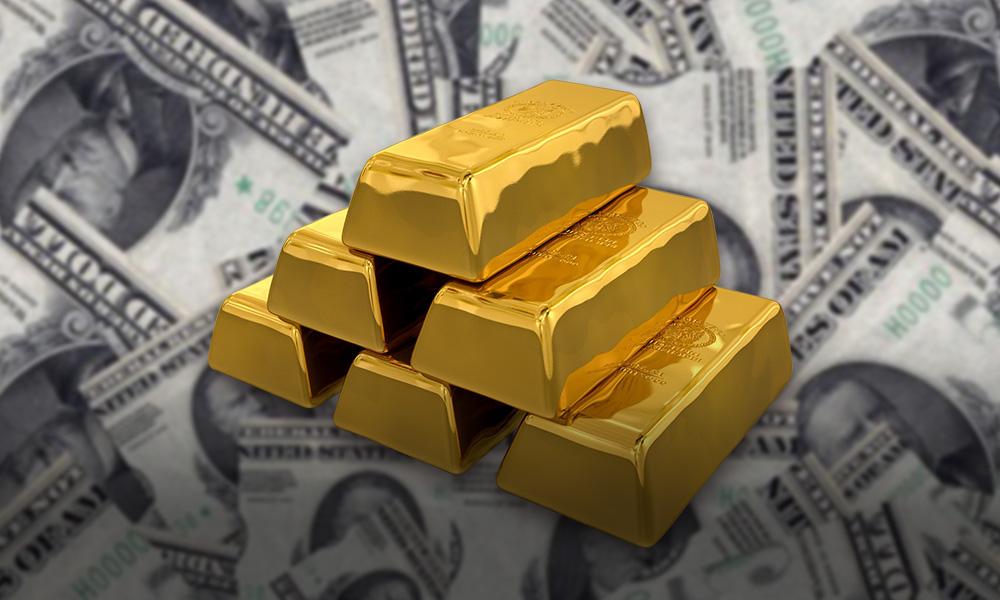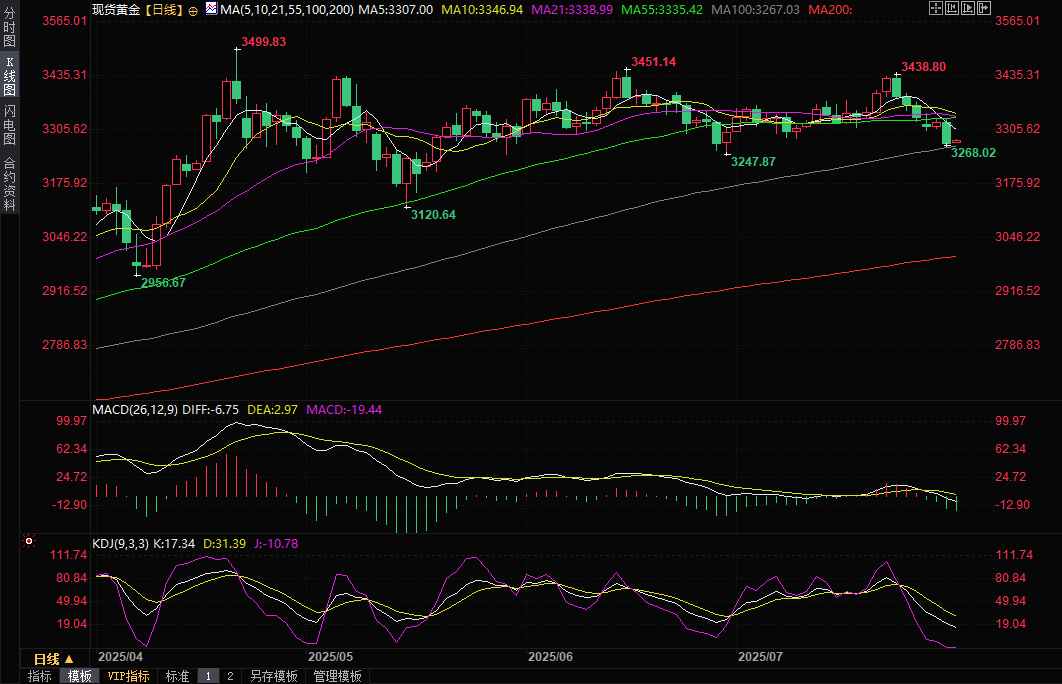Gold trading reminder: Powell's words shook the market, and the price of gold plummeted. Pay attention to the 100-day moving average support.
2025-07-31 07:55:58

Fed's "Eagle Claw" tears gold bulls apart
The Federal Reserve voted 9-2 at its July 30th meeting to keep the federal funds rate unchanged at 4.25%-4.50%, marking the fifth consecutive time the rate has remained unchanged. However, the dissenting votes of two board members in the meeting became a key focus in the market. Trump-appointed Vice Chairman for Financial Supervision, Bowman, and Board Member Waller explicitly supported a 25 basis point rate cut. This was not only the largest dissenting vote in over 30 years, but also reflected internal disagreements within the Fed regarding its policy path.
Federal Reserve Chairman Powell further dampened market expectations for a September rate cut at a subsequent press conference. He clarified that the Fed had not yet made any decisions regarding its September meeting and emphasized that it would proceed cautiously based on incoming economic data. Powell also noted that downside risks to the labor market were emerging, but that controlling inflation remained the core policy consideration. This statement quickly cooled market expectations for a September rate cut, with interest rate futures implying a sharp drop in the probability of a cut from 65% the previous day to 45%.
Independent metals trader Tai Wong commented: "Powell is more focused on inflation control rather than employment issues, which puts pressure on the gold market." The hawkish stance not only weakened the appeal of gold as a safe-haven asset, but also pushed up the US dollar and US Treasury yields, bringing additional downward pressure on gold prices.
A combination of U.S. economic data hit gold prices hard
In addition to the Fed's hawkish stance, gold bulls were also dealt a heavy blow by US economic data released that day. The ADP employment report showed that private payrolls increased more than expected in July, indicating that the labor market remains resilient. More notably, US GDP grew at an annualized rate of 3.0% in the second quarter, far exceeding expectations of a 2.4% increase and reversing the 0.5% contraction in the first quarter.
While economists point out that these data are skewed—the decline in imports contributed most to the growth, and domestic demand growth hit a two-and-a-half-year low—the overall economic picture painted by these data undeniably weakens market expectations of imminent Federal Reserve easing. Standard Chartered Bank analyst Steve Englander's commentary is quite representative: "Averaging the two quarters, a 1.5% growth rate is only mediocre." However, the market tends to focus more on fluctuations in individual quarterly data, which directly led to a sell-off in gold.
The US dollar and Treasury yields: Gold's "natural enemies" are back in force
The strong performance of the US dollar index was a direct factor weighing on gold's performance. On July 30, the US dollar index rose by over 1%, reaching a high of 99.98, its highest level since May 29, and its cumulative gain in July exceeded 3%. The dollar's rise was closely tied to the Federal Reserve's decision to maintain high interest rates, as well as stronger-than-expected US economic data. "The dollar has been well supported, supported by strong data and the Fed's statement," said Uto Shinohara, senior investment strategist at Mesirow Currency Management. The strengthening dollar has directly weakened the appeal of dollar-denominated gold, making it significantly more expensive to purchase, especially for investors holding other currencies.
Meanwhile, rising U.S. Treasury yields further exacerbated pressure on gold prices. The 10-year Treasury yield rose 4.4 basis points to 4.372% in late trading, while the two-year Treasury yield, which closely tracks interest rate expectations, rose 5.7 basis points to 3.932%. The rise in Treasury yields reflects market expectations that the Federal Reserve will maintain high interest rates, which directly impacts non-yielding assets like gold. Gold's appeal as a safe haven asset is often more pronounced in a low-interest rate environment, while high-yield environments weaken its investment value.
Global Macro Environment: The Complex Impact of Trade Frictions and Geopolitics
Changes in the global macro environment have added more uncertainty to the gold market. The Trump administration has recently made frequent moves on trade policy, reaching trade agreements with Japan, the European Union, and South Korea, while imposing high tariffs on India and Brazil.
On the one hand, these policies have eased investor concerns about the US withdrawing from global affairs and boosted confidence in the US dollar. On the other hand, progress in US-China trade negotiations and Trump's tariff measures on countries such as India and Brazil have increased global economic uncertainty. This uncertainty is generally beneficial to gold, but in the short term, the strength of the US dollar and the hawkish stance of the Federal Reserve are clearly dominant.
In addition, the Bank of Japan's monetary policy trends are also attracting much attention. The speech of Bank of Japan Governor Kazuo Ueda may bring new fluctuations to the yen and global foreign exchange markets.
Gold Market Outlook: Opportunities in the Pullback?
Despite a sharp short-term hit to gold prices, market analysts remain cautiously optimistic about the metal's long-term outlook. Tai Wong noted that while gold prices could face a deeper correction, the core rationale for the gold market—global economic uncertainty, high US debt, and the trend toward de-dollarization—remains valid. These factors are likely to attract buyers as gold prices reach the bottom of their range. Gold prices currently hit a low near $3,268 per ounce, approaching key technical support at the 100-day moving average (currently around $3,267). While gold prices may remain under pressure in the short term, long-term investors may view pullbacks as buying opportunities.
From a technical perspective, after gold prices fall below $3,300/oz, their short-term target could be around $3,250/oz (the June 30 low was $3,247.87/oz). Further declines could place $3,200/oz as a key psychological barrier. Conversely, if the Federal Reserve signals a clearer rate cut or global geopolitical risks escalate, gold prices could rebound quickly, returning above $3,300/oz.

(Spot gold daily chart, source: Yihuitong)
At 07:51 Beijing time, spot gold was trading at $3282.90 per ounce.
- Risk Warning and Disclaimer
- The market involves risk, and trading may not be suitable for all investors. This article is for reference only and does not constitute personal investment advice, nor does it take into account certain users’ specific investment objectives, financial situation, or other needs. Any investment decisions made based on this information are at your own risk.





















